The Impact of Plastic Microbeads on Marine Life
The ocean, often referred to as the blue heart of our planet, is facing a silent yet deadly threat: plastic microbeads. These tiny plastic particles, measuring less than 5mm, are not just an environmental nuisance; they are a significant danger to marine ecosystems. As we dive into this issue, it’s essential to understand how these microbeads infiltrate our oceans, the consequences they have on marine life, and what we can do to combat this growing problem.
Plastic microbeads are minuscule pieces of plastic that are commonly used in various personal care products, such as facial scrubs, body washes, and even toothpaste. Their primary purpose is to serve as exfoliants or abrasives, but their size makes them particularly dangerous. Once rinsed down the drain, these microbeads easily slip through wastewater treatment systems, entering rivers and eventually the ocean. Imagine these tiny particles as the uninvited guests at a party, causing chaos wherever they go. Their composition, often made from polyethylene or polypropylene, means they do not biodegrade, leading to long-lasting pollution in marine environments.
So, where do these pesky microbeads come from? They originate from a variety of consumer products that many of us use daily. The most common sources include:
- Exfoliating facial scrubs
- Body washes
- Toothpaste
- Shaving gels
- Some cleaning products
These products are often marketed for their ability to provide a deeper clean, but they come with a hidden cost to our oceans. The industries responsible for their production, including cosmetics and personal care, have been slow to adapt to the growing awareness of microbead pollution, making it crucial for consumers to demand change.
Once microbeads are released into the environment, they follow various pathways that lead to marine pollution. One of the most significant routes is through wastewater treatment facilities. Unfortunately, these facilities are not equipped to filter out such tiny particles effectively. As a result, microbeads travel through rivers and streams, eventually making their way into the vast oceans. This journey not only exacerbates pollution but also disrupts delicate ecosystems along the way.
Current wastewater treatment technologies face significant challenges in capturing microbeads. Most systems are designed to filter larger particles, leaving behind these tiny pollutants. This inefficiency highlights the urgent need for improved filtration systems that can effectively trap microbeads before they reach natural water bodies. Researchers are exploring advanced technologies, but the implementation of these systems requires both financial investment and policy support.
In addition to wastewater treatment issues, stormwater runoff is another major pathway for microbeads to reach the ocean. During heavy rains, urban environments can wash microbeads from streets, parking lots, and rooftops directly into storm drains. This runoff carries not just microbeads but also other pollutants, creating a cocktail of contaminants that can devastate coastal ecosystems. The implications for marine life are dire, as these microbeads can be ingested by a variety of aquatic organisms.
The impact of microbeads on marine life is profound and multifaceted. Small fish and other marine organisms often mistake these particles for food, leading to ingestion. This can result in physical harm, reduced feeding efficiency, and even death. Furthermore, microbeads can accumulate in the bodies of marine animals, leading to bioaccumulation as larger predators consume smaller fish. This chain reaction creates a ripple effect throughout the food web, ultimately affecting biodiversity and the health of marine ecosystems.
As if the threat to marine life wasn't alarming enough, microbeads also pose potential health risks to humans. When marine animals ingest microbeads, they can accumulate in their bodies, and when we consume seafood, we inadvertently consume these microplastics. This raises serious concerns about food safety and public health, as the long-term effects of microplastic consumption are still largely unknown. What happens when we eat fish that have ingested plastic? It’s a question that demands urgent answers.
The contamination of the food chain is a critical issue that cannot be ignored. Microbeads can make their way up the food chain, affecting not only marine species but also humans who rely on seafood as a dietary staple. The implications for food safety are staggering. As we continue to consume contaminated seafood, we risk exposing ourselves to harmful chemicals that may be absorbed by microbeads, leading to potential health issues.
Recent studies have shed light on the alarming effects of microbeads on marine life. Research indicates that the presence of microplastics can lead to reduced reproductive rates, impaired growth, and increased mortality in various marine species. These findings underscore the urgency of addressing this environmental issue before it spirals out of control. The more we learn, the clearer it becomes that we must take action to protect our oceans.
Addressing the microbead crisis requires collective action from individuals, industries, and governments. Potential solutions include:
- Implementing stricter regulations on the use of microbeads in consumer products
- Raising public awareness about the environmental impact of microbeads
- Encouraging the development of biodegradable alternatives
- Investing in advanced wastewater treatment technologies
By working together, we can combat the microbead crisis and protect the health of our oceans for future generations. It’s time to take a stand and advocate for change!
1. What are plastic microbeads?
Plastic microbeads are tiny plastic particles often found in personal care products like scrubs and toothpaste. They are less than 5mm in size and pose significant environmental threats.
2. How do microbeads enter the ocean?
Microbeads typically enter the ocean through wastewater treatment systems that cannot filter them out, as well as through stormwater runoff in urban areas.
3. What impact do microbeads have on marine life?
Microbeads can be ingested by marine organisms, leading to physical harm, reduced feeding efficiency, and bioaccumulation in larger predators, disrupting the food chain.
4. Are microbeads harmful to humans?
Yes, consuming seafood contaminated with microbeads can pose health risks, as the long-term effects of ingesting microplastics are still being studied.
5. What can be done to reduce microbead pollution?
Solutions include stricter regulations on microbead use, public awareness campaigns, and the development of biodegradable alternatives.
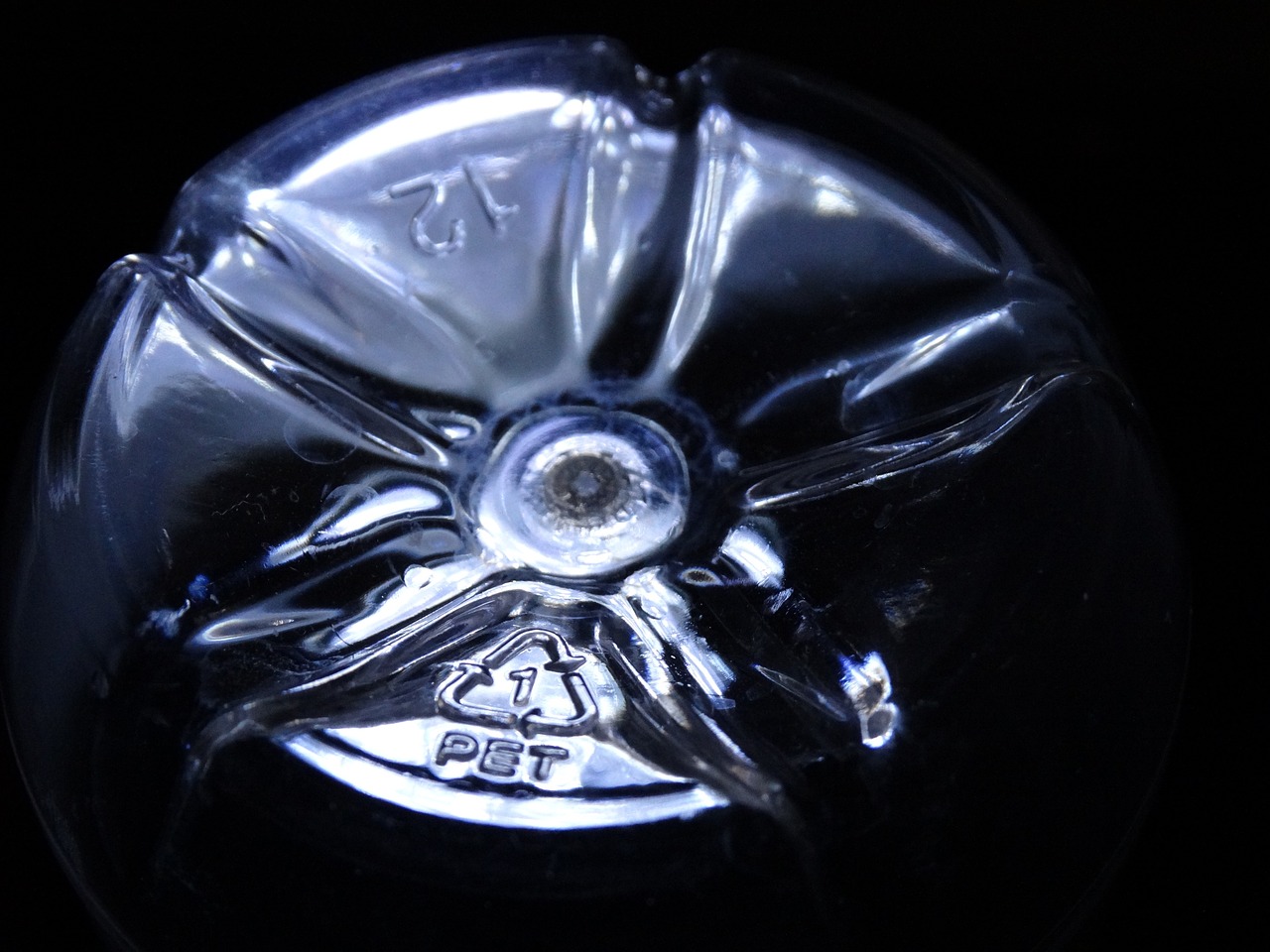
[Understanding Plastic Microbeads]
Plastic microbeads are minuscule particles of plastic, typically measuring less than 5 millimeters in diameter. These tiny bits of plastic are primarily made from polyethylene, polypropylene, or polystyrene, and they are often used in a variety of personal care products. You might be surprised to learn that they can be found in items such as exfoliating scrubs, toothpaste, and even some cosmetics. Their small size makes them easy to overlook, but their impact on marine ecosystems is anything but negligible.
So, how do these little culprits end up in our oceans? The journey of plastic microbeads begins in our bathrooms and kitchens. When we wash our faces or brush our teeth, these particles are washed down the drain. Unfortunately, conventional wastewater treatment plants are not equipped to effectively filter out microbeads. As a result, they often slip through the system and find their way into rivers and eventually the ocean. This is where the real trouble starts.
Once in the marine environment, plastic microbeads can be ingested by a variety of marine organisms. From the smallest plankton to larger fish, these particles are mistaken for food. When marine life consumes microbeads, they can suffer from a range of health issues, including internal injuries, reduced growth, and reproductive problems. The implications of this ingestion can ripple through the entire ecosystem, affecting species diversity and population dynamics.
To better understand the scale of this issue, consider the following table that outlines the key characteristics of plastic microbeads:
| Characteristic | Description |
|---|---|
| Size | Less than 5mm |
| Composition | Polyethylene, Polypropylene, Polystyrene |
| Common Sources | Exfoliating scrubs, Toothpaste, Cosmetics |
| Environmental Impact | Ingestion by marine life, Bioaccumulation |
The alarming reality is that plastic microbeads not only affect marine organisms but also pose a threat to human health. When we consume seafood that has ingested these microplastics, we may unknowingly introduce harmful chemicals into our bodies. The cycle of pollution continues as these microbeads accumulate in the food chain, leading to broader environmental and health concerns.
In conclusion, understanding plastic microbeads and their impact on marine life is crucial for addressing this pressing environmental issue. As we continue to explore the sources and consequences of microbead pollution, it becomes clear that collective action is necessary to protect our oceans and the diverse ecosystems they support.

[Sources of Plastic Microbeads]
Plastic microbeads are tiny, often invisible particles that have found their way into our oceans and waterways, and their origins can be traced back to a variety of consumer products that many of us use daily. These minuscule beads, typically less than 5 millimeters in size, are primarily composed of polyethylene, a type of plastic that is both durable and cheap to produce. They are commonly found in personal care items such as exfoliating scrubs, toothpaste, and even some shampoos. The appeal of microbeads lies in their ability to provide a gentle scrubbing action, making them a popular choice for manufacturers aiming to enhance the texture and effectiveness of their products.
However, the convenience of microbeads comes at a significant environmental cost. Each time we wash our faces or brush our teeth, tiny plastic particles are washed down the drain and into our wastewater systems. Unfortunately, many wastewater treatment facilities are not equipped to filter out these minuscule particles effectively. As a result, microbeads often escape into rivers, lakes, and ultimately the ocean, contributing to the growing problem of marine pollution.
To better understand the sources of plastic microbeads, let's take a closer look at some of the most common products that contain them:
- Facial Scrubs: Many exfoliating scrubs use microbeads as an abrasive agent to slough off dead skin cells.
- Toothpaste: Some brands incorporate microbeads for their purported whitening effects.
- Body Washes: Certain body washes include microbeads to enhance lather and exfoliation.
- Cosmetics: Some makeup products, such as foundations and blushes, may contain microbeads for added texture.
While these products may seem harmless in our daily routines, their cumulative effect is anything but. The sheer volume of microbeads entering the environment is staggering; estimates suggest that billions of these particles are released into waterways every year. This not only poses a threat to aquatic life but also raises concerns about the long-term health of our oceans.
In addition to personal care products, microbeads can also be found in industrial applications, such as abrasives used for cleaning and polishing. These industrial microbeads can also end up in water systems, compounding the problem. As consumers, it’s crucial to be aware of the products we use and their potential impact on the environment.
As awareness grows, some companies are beginning to phase out plastic microbeads in favor of natural alternatives, such as ground walnut shells or oatmeal. These alternatives not only serve the same purpose but are also biodegradable and less harmful to marine ecosystems. However, the transition is slow, and many products still contain plastic microbeads, making it essential for consumers to read labels carefully and make informed choices.
In conclusion, understanding the sources of plastic microbeads is a critical step in combating marine pollution. By recognizing the products that contribute to this issue, we can take proactive measures to reduce our plastic footprint and advocate for cleaner alternatives. As we become more conscious of our choices, we can collectively push for change, ensuring healthier oceans for the future.
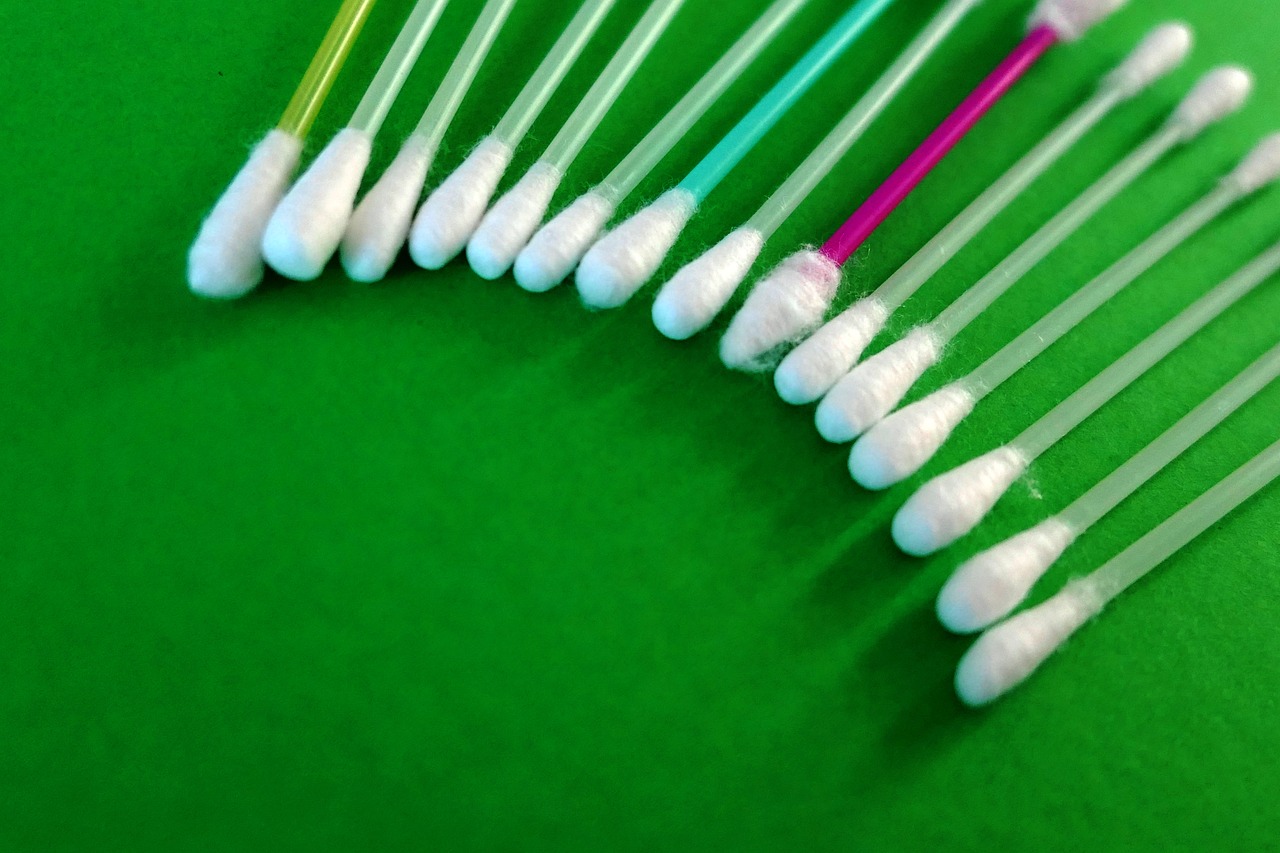
[Environmental Pathways]
Plastic microbeads are insidious little culprits when it comes to marine pollution. These tiny particles, often less than 5 millimeters in diameter, find their way into our oceans through a variety of environmental pathways. Understanding how they travel is crucial to addressing their impact on marine ecosystems. One of the primary routes for microbeads to enter the ocean is via wastewater treatment plants. Despite being designed to filter out larger particles, many facilities lack the technology to effectively capture these minuscule plastics. As a result, microbeads can slip through the cracks—quite literally—and flow into rivers and eventually the sea.
Once in the waterways, microbeads can be carried over long distances by currents, making them a widespread pollutant. They are often found in areas where water flow is slower, such as estuaries and coastal regions, where they can accumulate in sediments. This accumulation poses a significant risk to marine life, as many species mistake microbeads for food. Imagine a fish swimming around, mistaking a colorful microbead for a tasty morsel. Unfortunately, this is a common occurrence, and it sets off a chain reaction that can affect the entire food web.
Another pathway through which microbeads enter marine environments is stormwater runoff. When it rains, water flows over urban surfaces—like roads, rooftops, and parking lots—picking up pollutants along the way, including microbeads. This runoff is channeled into storm drains, which often lead directly to rivers and oceans without any treatment. In urban areas, where personal care products containing microbeads are used in abundance, the volume of microbeads entering the ocean can be staggering. To illustrate this, consider the following table showing estimated contributions of microbeads from various urban sources:
| Source | Estimated Microbeads Contributed (per year) |
|---|---|
| Personal Care Products | Over 8 trillion |
| Stormwater Runoff | Approximately 1 trillion |
| Wastewater Treatment Plants | About 5 trillion |
It’s not just the direct pathways that are concerning; the complex interactions between urban infrastructure and natural water systems amplify the problem. Urban areas often lack the green spaces that can help absorb and filter pollutants before they reach larger bodies of water. This lack of natural filtration means that microbeads and other contaminants can enter marine ecosystems with little to no hindrance. Therefore, addressing these environmental pathways is not just about improving technology; it’s about rethinking our urban design and how we manage stormwater.
In conclusion, the environmental pathways through which plastic microbeads enter the ocean are multifaceted and complex. From inadequate wastewater treatment processes to stormwater runoff, these pathways highlight the urgent need for improved filtration systems and better urban planning. As we continue to uncover the full extent of microbead pollution, it becomes increasingly clear that we must take collective action to protect our oceans.
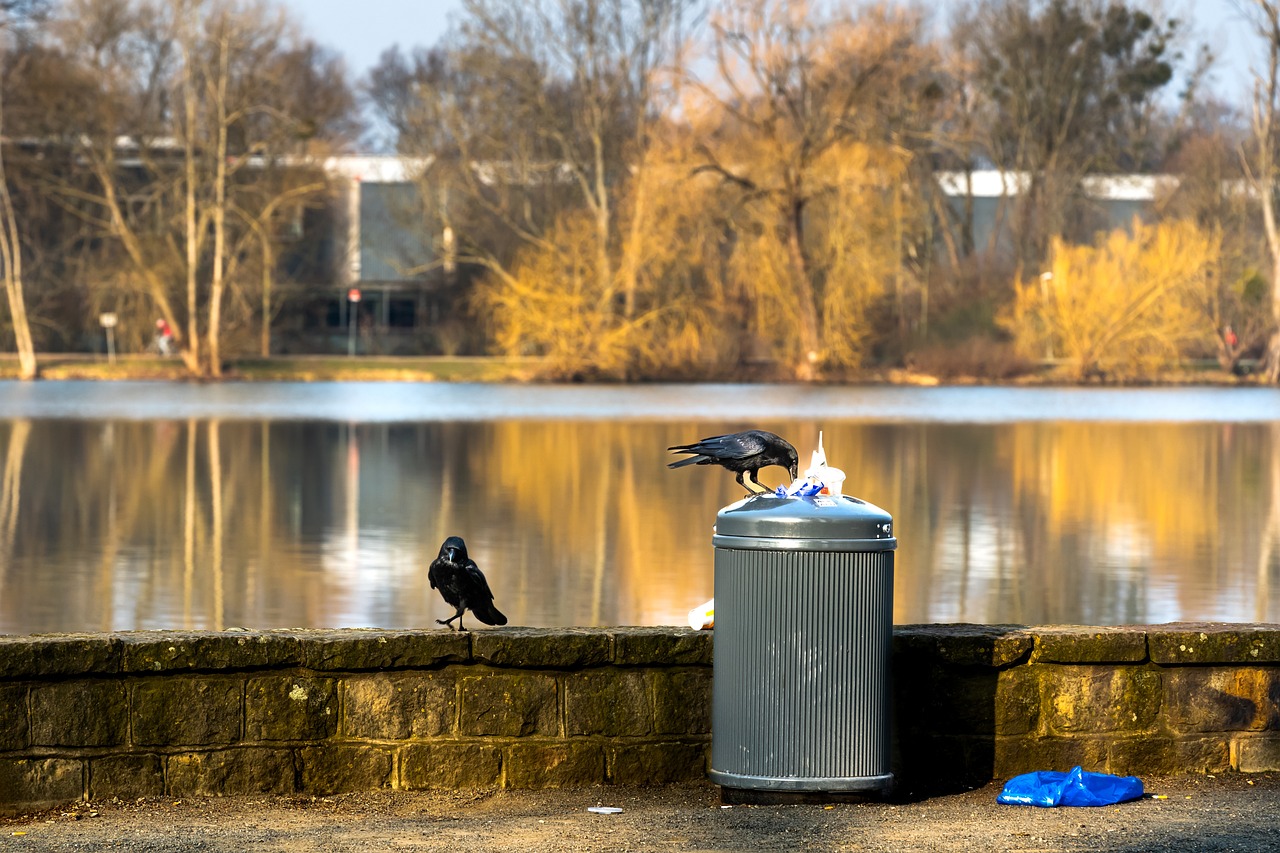
[Wastewater Treatment Challenges]
When it comes to tackling the issue of plastic microbeads, wastewater treatment facilities face significant challenges. These tiny particles, often less than 5mm in size, are so minuscule that they easily slip through the filters designed to capture larger pollutants. The reality is that most conventional wastewater treatment plants were not built with the intention of filtering out microplastics, meaning that these harmful substances frequently go undetected as they make their way into rivers and oceans.
One of the primary challenges is the inefficiency of current filtration systems. Traditional treatment methods, such as primary and secondary treatment processes, focus on removing organic matter and larger solids. However, microbeads can evade these systems and continue their journey into aquatic environments. The technology simply isn’t equipped to handle such small particles. For example, while a standard filter might catch debris the size of a grain of sand, microbeads can easily pass through, contributing to the growing problem of marine pollution.
Moreover, the complexity of wastewater systems adds another layer of difficulty. Each facility has different setups, and many are not designed to adapt to the evolving challenges posed by microplastics. Some plants are beginning to explore advanced filtration technologies, such as membrane bioreactors and advanced oxidation processes, but these methods can be costly and require significant upgrades to existing infrastructure. The investment needed for these improvements often falls short due to budget constraints, leading to a lack of urgency in addressing the problem.
Additionally, stormwater runoff exacerbates the situation. During heavy rains, untreated stormwater can overflow into waterways, carrying microbeads and other pollutants directly into the ocean. This runoff is particularly problematic in urban areas where impermeable surfaces prevent water from being absorbed into the ground, leading to a rapid influx of contaminants. The combination of inadequate treatment facilities and the overwhelming volume of stormwater creates a perfect storm for microplastic pollution.
In conclusion, the challenges faced by wastewater treatment facilities in dealing with plastic microbeads are multifaceted. From outdated technologies to the complexities of stormwater management, addressing these issues requires a concerted effort from policymakers, engineers, and environmental advocates. As we work toward solutions, it’s crucial to raise awareness about the importance of upgrading our wastewater treatment systems to protect marine ecosystems and, ultimately, human health.
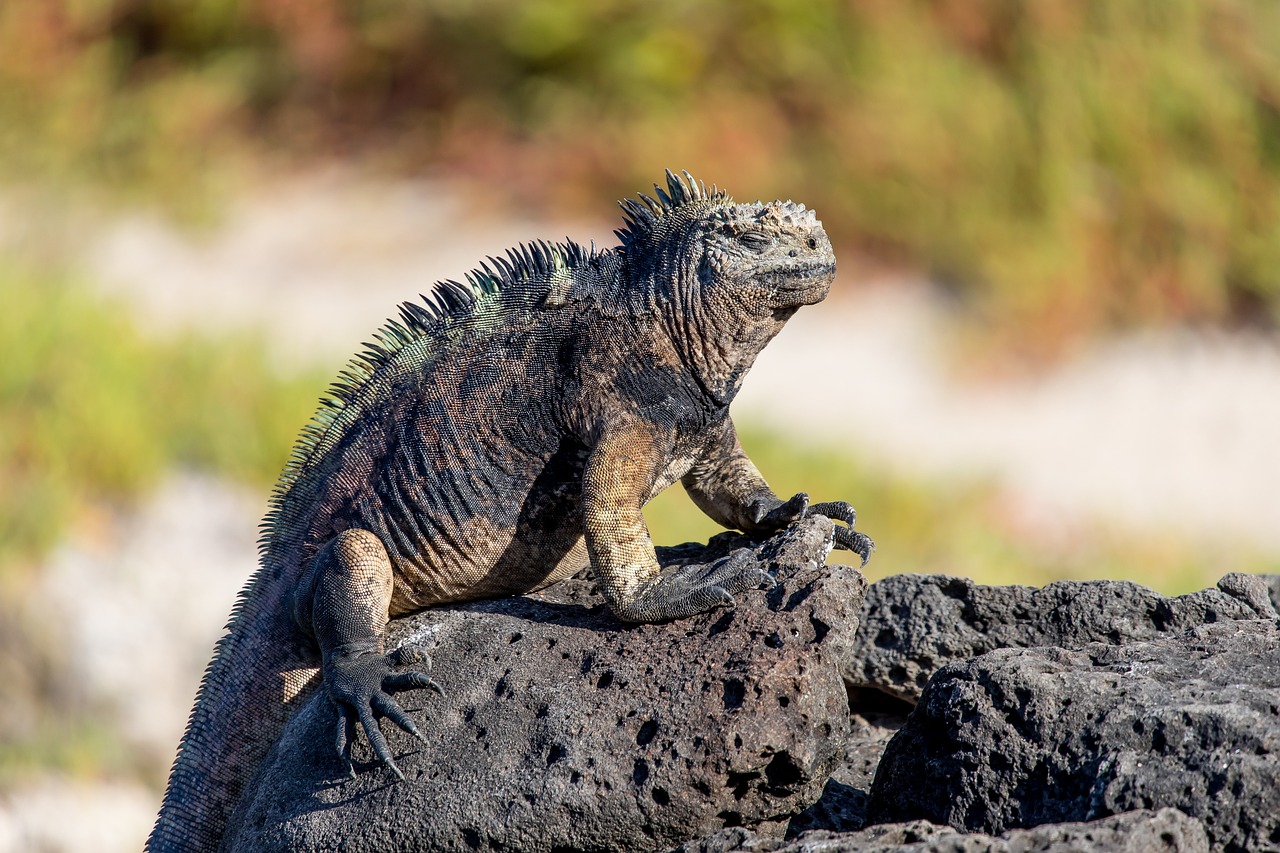
[Stormwater Runoff]
Stormwater runoff is a significant contributor to the problem of plastic microbeads entering our oceans. When it rains, water flows over urban surfaces such as roads, rooftops, and parking lots, picking up various pollutants along the way. This runoff often carries with it a cocktail of contaminants, including plastic microbeads from personal care products, which can easily wash into storm drains and eventually make their way into rivers, lakes, and oceans. The urban environment plays a crucial role in this process, as the impervious surfaces prevent water from soaking into the ground, leading to increased runoff.
In cities, the concentration of microbeads can be particularly high due to the sheer volume of personal care products used. Exfoliating scrubs, facial cleansers, and even some toothpaste contain these tiny plastic particles, which are often too small to be effectively filtered out by stormwater management systems. Consequently, they end up in local waterways, contributing to the larger problem of marine pollution. This is not just an environmental concern; it’s a pressing issue that affects the health of aquatic ecosystems and the organisms that inhabit them.
Moreover, the implications of stormwater runoff extend beyond just microbeads. It can also carry other harmful substances, such as oils, heavy metals, and nutrients that contribute to algal blooms, further degrading water quality. The combination of these factors creates a vicious cycle of pollution that threatens marine life. For instance, small fish may ingest these microbeads, mistaking them for food, which can lead to digestive issues and even death. As these fish are consumed by larger predators, the microbeads—and any associated toxins—move up the food chain, affecting a wide array of species, including humans.
To illustrate the impact of stormwater runoff on microbead pollution, consider the following table that summarizes key statistics related to urban runoff and its contribution to marine pollution:
| Factor | Impact on Marine Pollution |
|---|---|
| Volume of Stormwater Runoff | Increases concentration of pollutants, including microbeads |
| Urbanization | Reduces natural filtration, leading to more contaminants entering waterways |
| Personal Care Products | Source of microbeads, contributing to marine pollution |
| Inadequate Treatment Facilities | Fail to filter out microbeads and other contaminants effectively |
In conclusion, addressing the issue of stormwater runoff is essential to mitigating the impact of plastic microbeads on our oceans. By improving urban infrastructure to better manage stormwater and reduce the introduction of these pollutants into our waterways, we can take significant strides toward protecting marine ecosystems. It’s a complex challenge, but one that we must tackle to ensure a healthier planet for future generations.
- What are plastic microbeads? Plastic microbeads are tiny plastic particles found in many personal care products, such as exfoliating scrubs and toothpaste.
- How do microbeads enter the ocean? They often escape through wastewater treatment facilities and stormwater runoff, ultimately reaching rivers and oceans.
- What impact do microbeads have on marine life? Marine organisms can ingest microbeads, leading to health issues and bioaccumulation in the food chain.
- Can stormwater runoff be controlled? Yes, improving urban infrastructure and filtration systems can help manage stormwater runoff and reduce microbead pollution.

[Impact on Marine Life]
The presence of plastic microbeads in our oceans is nothing short of a ticking time bomb for marine ecosystems. These tiny particles, often less than one millimeter in diameter, are deceptively small yet incredibly harmful. Imagine a fish swimming in its natural habitat, unknowingly consuming these microbeads alongside its usual diet. This scenario is not just a possibility; it is a reality that threatens the very fabric of marine life.
When marine organisms, from the smallest plankton to larger fish, ingest microbeads, the consequences can be dire. Microbeads act like sponges, absorbing toxic chemicals from the surrounding water. As these contaminants accumulate, they can lead to a range of health issues for marine species, including reproductive problems, stunted growth, and even death. The ingestion of microbeads can disrupt the digestive systems of these creatures, leading to malnutrition and starvation. In essence, these tiny particles are creating a ripple effect that can devastate entire marine populations.
Furthermore, microbeads are not just a problem for the fish that eat them. They can travel up the food chain, affecting larger predators and ultimately humans. For example, when small fish consume microbeads, they may become prey for larger species, such as tuna or swordfish. As these larger fish accumulate microplastics in their bodies, the risks extend to those who consume seafood, raising significant health concerns. The implications of this contamination are alarming, as it intertwines the health of marine life with human health.
To illustrate the impact of microbeads on marine life, consider the following table:
| Marine Organism | Impact of Microbead Ingestion |
|---|---|
| Plankton | Disruption of feeding, reduced reproductive rates |
| Small Fish | Malnutrition, growth stunting, increased mortality |
| Predatory Fish | Bioaccumulation of toxins, health risks from contaminated prey |
| Marine Mammals | Impaired health, reproductive issues, potential starvation |
This table highlights just a few examples of how microbeads can disrupt the lives of various marine organisms. As these effects compound, the stability of marine ecosystems is put at risk, leading to a decline in biodiversity. The loss of species not only affects the ecological balance but also the livelihoods of communities that depend on fishing and tourism.
In summary, the impact of plastic microbeads on marine life is profound and multifaceted. From the smallest plankton to the largest predators, these pollutants pose a serious threat to the health of our oceans. The consequences of microbead ingestion extend beyond individual species, affecting entire ecosystems and even human health. As we continue to explore solutions to this pressing issue, it is crucial to recognize the interconnectedness of all life in our oceans and the urgent need for action.
- What are plastic microbeads? Plastic microbeads are tiny plastic particles often found in personal care products, such as exfoliating scrubs and toothpaste.
- How do microbeads affect marine life? Microbeads can be ingested by marine organisms, leading to various health issues, including malnutrition and reproductive problems.
- Can microbeads impact human health? Yes, microbeads can accumulate in the food chain, posing potential health risks to humans who consume contaminated seafood.
- What can be done to reduce the impact of microbeads? Solutions include policy changes, public awareness campaigns, and the development of biodegradable alternatives to plastic microbeads.
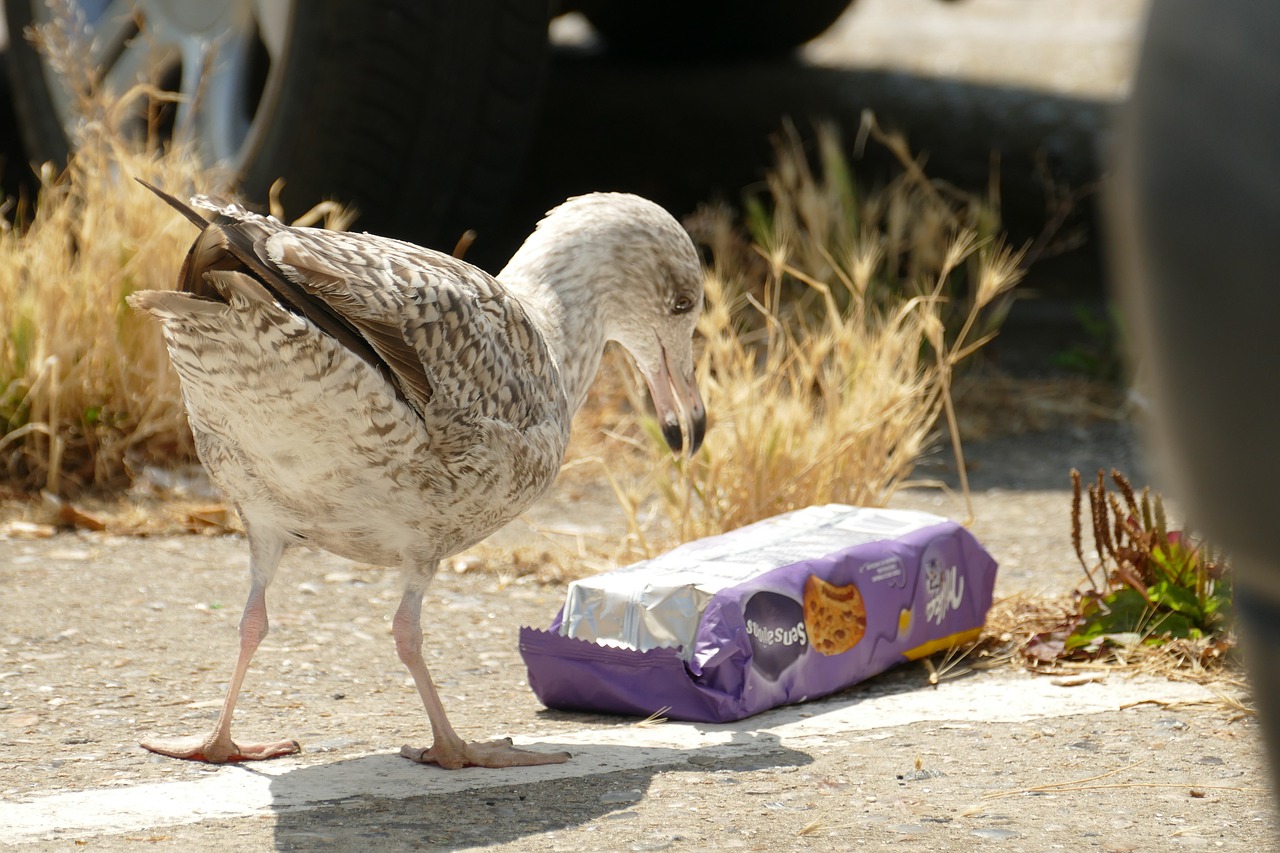
[Health Risks to Humans]
The ingestion of plastic microbeads by marine animals is not just an environmental concern; it poses significant health risks to humans as well. When we consume seafood that has ingested these tiny plastic particles, we are indirectly introducing microplastics into our own bodies. This alarming reality raises a multitude of questions about the safety of our food supply and the potential long-term effects on human health.
Microbeads can accumulate in the food chain, creating a ripple effect that can impact not only marine species but also humans. When smaller fish consume microbeads, they become part of the diet for larger fish, birds, and ultimately, us. This process of bioaccumulation can lead to higher concentrations of harmful substances in larger predators, including humans. But what exactly does this mean for our health?
Research has shown that microplastics can carry toxic chemicals that may have been absorbed from the surrounding environment. These chemicals can include persistent organic pollutants (POPs) and heavy metals, which are known to have detrimental effects on human health. The World Health Organization has even raised concerns about the potential for microplastics to contribute to health issues such as:
- Endocrine disruption: Chemicals associated with microplastics can interfere with hormonal systems.
- Inflammation: Ingested microplastics may trigger inflammatory responses in the body.
- Carcinogenic effects: Some studies suggest a link between certain microplastics and cancer development.
Moreover, the health implications of consuming contaminated seafood are still being studied, but the potential risks cannot be ignored. As seafood consumption continues to rise globally, understanding the extent of microbead contamination in our diets becomes increasingly crucial.
To illustrate the potential dangers, consider the following table that summarizes key findings from recent studies on microbeads and their health impacts:
| Study | Findings | Health Implications |
|---|---|---|
| Study A (2020) | Microplastics found in 80% of sampled fish | Increased risk of toxic exposure |
| Study B (2021) | Microbeads linked to reproductive issues in marine mammals | Potential reproductive health risks for humans |
| Study C (2022) | Microplastics associated with chronic inflammation | Long-term health complications |
As the evidence mounts, it becomes clear that the consequences of microbead ingestion extend beyond our oceans and into our homes. The potential for microplastics to affect human health underscores the urgency of addressing this environmental crisis. It's not just about protecting marine life; it's about safeguarding our own health and the health of future generations.
Q: What are microbeads?
A: Microbeads are tiny plastic particles commonly found in personal care products like exfoliating scrubs and toothpaste.
Q: How do microbeads enter the ocean?
A: Microbeads often escape wastewater treatment facilities and can also be washed off during showers and baths, entering rivers and oceans.
Q: Are microbeads harmful to humans?
A: Yes, consuming seafood contaminated with microbeads can pose health risks, including exposure to toxic chemicals and potential long-term health effects.
Q: What can be done to reduce microbead pollution?
A: Solutions include supporting legislation to ban microbeads, using personal care products without plastic, and raising awareness about the issue.

[Food Chain Contamination]
The issue of food chain contamination due to plastic microbeads is a growing concern that affects not only marine ecosystems but also human health. When tiny plastic particles enter the ocean, they are often ingested by small marine organisms such as zooplankton and small fish. This process sets off a chain reaction that can have serious implications for the entire marine food web.
As these microbeads are consumed, they can accumulate in the bodies of these organisms, a phenomenon known as bioaccumulation. This means that as larger fish prey on smaller fish, the concentration of microplastics increases, leading to higher levels of contamination in top predators, including species that are commonly eaten by humans. Think of it like a game of musical chairs: as the music plays, the microbeads pass from one organism to another, but the chairs (or safe spaces) are quickly disappearing.
Research has shown that microbeads can carry harmful chemicals, which may adhere to their surfaces. When these contaminated organisms are consumed by larger fish or marine mammals, the toxic substances can enter the food chain, posing significant risks to human health. This is particularly concerning for communities that rely heavily on seafood as a primary source of protein. Imagine biting into a delicious fish fillet, only to find out it’s laced with tiny bits of plastic!
The implications of this contamination extend beyond just the fish on our plates. Studies have indicated that microplastics can lead to various health issues, including hormonal disruptions, reproductive problems, and even cancer. The long-term effects of consuming microplastics are still under investigation, but the potential risks are alarming enough to warrant immediate attention.
To illustrate the extent of this issue, consider the following table that summarizes the potential impacts of microbead contamination at different levels of the food chain:
| Organism Level | Type of Impact | Examples |
|---|---|---|
| Primary Producers | Ingestion of microbeads | Plankton |
| Primary Consumers | Bioaccumulation of toxins | Small fish, mollusks |
| Secondary Consumers | Increased toxin concentration | Larger fish, seabirds |
| Tertiary Consumers | Health risks to humans | Humans consuming seafood |
In conclusion, the contamination of the food chain by plastic microbeads is a multifaceted problem that requires urgent action. By understanding how microbeads travel through marine ecosystems and accumulate in organisms, we can better appreciate the risks they pose not only to marine life but also to human health. Addressing this issue is imperative for the sustainability of our oceans and the safety of our food supply.
- What are plastic microbeads? Plastic microbeads are tiny plastic particles commonly used in personal care products like exfoliating scrubs and toothpaste.
- How do microbeads affect marine life? Microbeads can be ingested by marine organisms, leading to bioaccumulation of toxins and posing risks to the entire food chain.
- Are microbeads harmful to humans? Yes, consuming seafood contaminated with microbeads can lead to health issues, including hormonal disruptions and increased cancer risk.
- What can be done to reduce microbead pollution? Solutions include policy changes, public awareness campaigns, and the development of biodegradable alternatives to plastic microbeads.
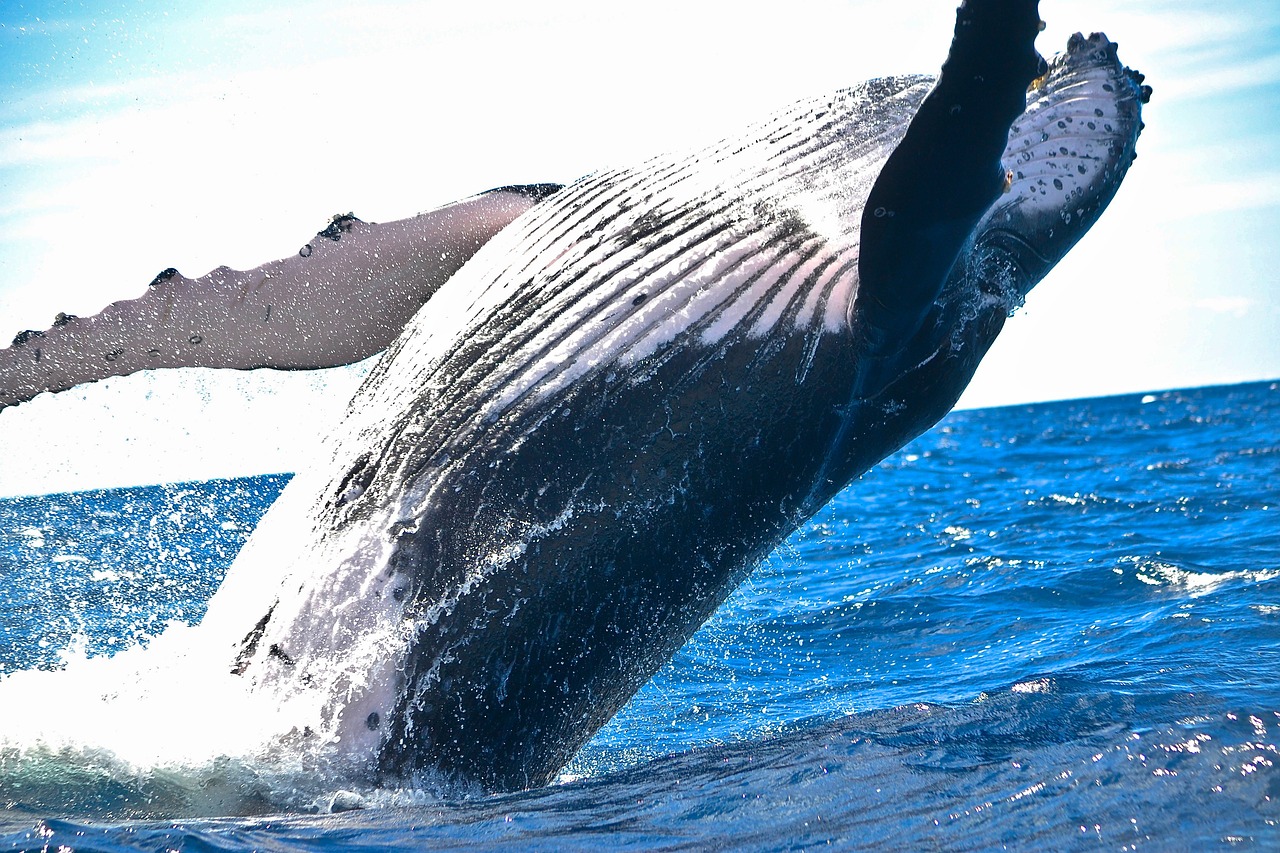
[Research and Findings]
Recent studies have painted a concerning picture regarding the impact of plastic microbeads on marine life. Researchers have discovered that these minuscule particles, often less than 5mm in size, can have catastrophic effects on aquatic ecosystems. One of the most alarming findings is that microbeads can be mistaken for food by various marine organisms, leading to ingestion and subsequent health issues.
For instance, a study conducted by the University of California found that over 80% of sampled fish in certain coastal areas contained microplastics in their digestive systems. This statistic highlights the pervasive nature of microbeads in our oceans and raises questions about the long-term viability of marine species. As these particles accumulate in the food chain, larger predators, including commercially important fish species, are at risk of bioaccumulation, which can lead to toxicity.
Moreover, a report published by the National Oceanic and Atmospheric Administration (NOAA) indicated that microbeads can absorb harmful pollutants from the surrounding water, such as pesticides and heavy metals. When marine animals consume these contaminated microbeads, they are not only ingesting plastic but also a cocktail of toxic substances that can compromise their health and reproductive capabilities.
To add to the urgency, a comprehensive review of the literature by Marine Pollution Bulletin revealed that microplastics, including microbeads, are now found in some of the most remote oceanic regions. This finding underscores the global nature of the problem, suggesting that even the most pristine marine environments are not immune to plastic pollution.
As we delve deeper into the research, it becomes evident that the implications of microbead pollution extend beyond marine life. The potential for microbeads to enter the human food chain via seafood consumption raises significant public health concerns. A study from the World Health Organization (WHO) highlighted the need for further research on the effects of microplastics on human health, as the long-term consequences remain largely unknown.
In summary, the findings surrounding plastic microbeads are alarming and warrant immediate action. With the evidence mounting, it is clear that these tiny pollutants pose a significant threat not only to marine ecosystems but also to human health. Addressing this issue requires a concerted effort from researchers, policymakers, and the public to implement effective solutions and raise awareness about the dangers of plastic microbeads.
- What are plastic microbeads? Plastic microbeads are tiny plastic particles found in various personal care products, such as exfoliating scrubs and toothpaste.
- How do microbeads affect marine life? Marine organisms can ingest microbeads, leading to health issues and bioaccumulation of toxins in the food chain.
- Are microbeads harmful to humans? Yes, consuming seafood contaminated with microbeads can pose health risks due to the accumulation of toxins in the food chain.
- What can be done to reduce microbead pollution? Solutions include banning microbeads in consumer products, improving wastewater treatment technologies, and raising public awareness.

[Solutions and Alternatives]
The fight against plastic microbeads is not just a battle for the oceans; it's a fight for our future. Tackling this issue requires a multi-faceted approach that involves policy changes, public awareness, and the development of biodegradable alternatives. Think of it like a team sport—everyone needs to play their part to make a real difference!
First and foremost, governments around the world need to step up and implement stricter regulations on the use of microbeads in consumer products. Countries like the United States have already taken significant strides by passing legislation that bans microbeads in cosmetics. However, this is just the tip of the iceberg. More nations must follow suit, ensuring that manufacturers are held accountable for their products. Imagine a world where every country had a similar law—what a difference that would make!
In addition to legislative action, raising public awareness is crucial. Many consumers are simply unaware of the impact their daily choices have on the environment. Educational campaigns that inform people about the dangers of microbeads can lead to more conscious purchasing decisions. For instance, when consumers understand that their favorite exfoliating scrub contributes to ocean pollution, they may opt for alternatives that are microbead-free. Social media, community workshops, and even school programs can play a significant role in spreading this vital information.
Speaking of alternatives, the beauty industry is already making strides in this area. Many brands are now producing natural exfoliants that are just as effective as their plastic counterparts but are made from biodegradable materials. These alternatives not only help protect marine life but also appeal to environmentally conscious consumers. Here’s a quick comparison of traditional microbeads and eco-friendly options:
| Feature | Plastic Microbeads | Biodegradable Alternatives |
|---|---|---|
| Source | Petroleum-based | Natural materials (e.g., sugar, salt, ground nuts) |
| Environmental Impact | Pollution and marine life harm | Safe for marine ecosystems |
| Consumer Awareness | Low | Increasing |
Moreover, industries can invest in research and development to create innovative solutions that eliminate the need for microbeads altogether. For example, some companies are exploring the use of plant-based exfoliants or even developing new technologies that can provide the same benefits without harming the environment. This is where creativity meets responsibility, and it’s exciting to think about what the future might hold!
Finally, we must consider the role of wastewater treatment facilities. Upgrading these systems to effectively filter out microbeads is essential. By investing in advanced filtration technologies, we can significantly reduce the number of microbeads that make their way into our oceans. It’s like giving our water treatment plants a much-needed makeover—one that can lead to cleaner water and healthier marine ecosystems.
In conclusion, addressing the microbead crisis is a shared responsibility that requires action at multiple levels. From policymakers to consumers, everyone has a role to play. By choosing alternatives, advocating for stricter regulations, and supporting innovations, we can turn the tide against plastic pollution in our oceans. Let’s make waves for a cleaner, healthier planet!
- What are plastic microbeads? Plastic microbeads are tiny particles of plastic often found in personal care products like exfoliating scrubs and toothpaste.
- How do microbeads affect marine life? Marine organisms can ingest these microbeads, leading to bioaccumulation and potential harm to their health and the health of predators that consume them.
- Are there alternatives to plastic microbeads? Yes, many brands are now offering natural exfoliants made from biodegradable materials, such as sugar or ground nuts.
- What can I do to help? You can help by choosing products that do not contain microbeads, supporting legislation aimed at banning them, and spreading awareness about their effects.
Frequently Asked Questions
- What are plastic microbeads?
Plastic microbeads are tiny plastic particles, typically less than 5mm in size, commonly found in personal care products like exfoliating scrubs and toothpaste. They are designed to enhance texture and provide a scrubbing effect but pose significant environmental challenges.
- How do plastic microbeads enter the ocean?
Microbeads often escape through wastewater treatment facilities, which struggle to filter out these small particles effectively. They can also enter the ocean via stormwater runoff, especially in urban areas where rainwater washes debris into waterways.
- What impact do microbeads have on marine life?
Microbeads can be ingested by small marine organisms, leading to physical harm and potential bioaccumulation in larger predators. This ingestion not only affects individual species but can disrupt entire marine ecosystems.
- Are there health risks for humans consuming seafood contaminated with microbeads?
Yes, consuming seafood that has ingested microbeads can pose health risks due to the potential accumulation of harmful chemicals. This contamination raises concerns about food safety and the long-term effects on human health.
- What are some solutions to the microbead problem?
Addressing the microbead crisis involves policy changes, such as banning their use in cosmetics, increasing public awareness, and developing biodegradable alternatives. Collective action is crucial to mitigate their impact on marine ecosystems.
- What industries are responsible for producing microbeads?
Microbeads are primarily produced by the cosmetics and personal care industries, where they are used in products like facial scrubs, body washes, and toothpaste. Awareness and regulation in these sectors are vital for reducing microbead pollution.
- What research has been done on microbeads and their effects?
Recent studies have highlighted alarming findings regarding the presence of microbeads in marine environments, showing their potential to harm marine life and disrupt ecosystems. Ongoing research is essential to understand the full impact and develop effective solutions.



















